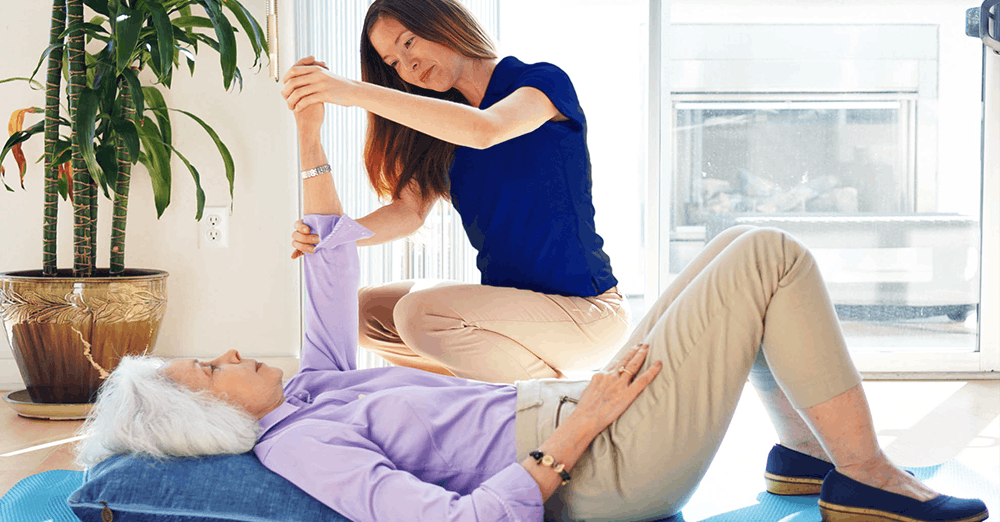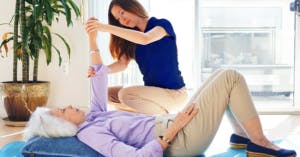How Can Home Care Help Seniors with Osteoporosis?

As our bodies age, bone health becomes a significant health concern. Bones are living tissues that suffer the same effects of aging as the rest of our bodies: Cell degeneration accelerates and the building of new bone slows down, resulting in porous, brittle bones that break all too easily. This condition, called osteoporosis, affects millions of seniors every year. This silent disease shows no symptoms in the early stages, but as bones lose more mass, the symptoms begin to present. These include persistent pain, stooped posture, curved spine, height loss, and frequent fractures, often occurring with little or no provocation

Challenges of Having Osteoporosis
The varied risk factors for osteoporosis place people over 50 squarely on the path to bone loss. Age, illness, hormone deficiencies, and a sedentary lifestyle are the leading causes of bone loss. Weak, brittle bones make everyday life increasingly difficult for seniors living with osteoporosis and the disease brings with it a number of challenges, including:
Pain
Bone fractures are painful. Patients with osteoporosis often experience persistent pain.
Limited Mobility
Persistent pain and fractures that need to heal make mobility a challenge, plus limited mobility makes osteoporosis worse and cause other health problems as well.
Heavy Financial Burdens
Osteoporosis is expensive. Treating the disease, caring for the breaks, and paying for help all carry a high cost.
Depression
Those with osteoporosis experience depression and feelings of isolation because of pain and limited mobility. The financial burdens also have an effect on the patient’s sense of well-being.
The Benefits of In-Home Care
There’s no cure for osteoporosis, but there are ways to slow the progression and prevent the worst complications of the disease. For seniors struggling with osteoporosis, in-home health care is an important facet of maintaining quality of life. Being able to remain in the comfort of home has palliative value beyond any other form of medicine.
Caregivers provide services in 4 general areas specially designed to serve the needs of osteoporosis:
- Fall and fracture prevention
- Good nutrition
- Lifestyle assistance
- Care following breaks and medical procedures
Fall and Fracture Prevention
Keeping bones intact for osteoporosis patients is a challenge; often bones will break with very little stress. That said, it’s critical to prevent stumbles, trips, and falls. Caregivers provide light housekeeping services designed to keep walkways clear from hazards, and they perform chores that pose an unnecessary risk. Lifting heavy objects or even pushing a heavy vacuum may be enough to break a bone; in-home caregivers take over these routine tasks. In addition, caregivers are present to encourage the patient to avoid unnecessary risks; to use canes, walkers, and other recommended stabilizing tools; and even to stop patients from doing dangerous things such as climbing stepladders or moving heavy furniture.
Good Nutrition
Good nutrition is critical to slowing the progression of osteoporosis. Calcium and vitamin D deficiencies are among the leading causes of bones loss. Caregivers perform in-home meal care prep that plays an important role in providing patients with meals and snacks that are rich in calcium and vitamin D. Home health care providers also ensure that medications are given in appropriate doses at the appropriate times.
Lifestyle Assistance
Seniors with osteoporosis need to make a handful of significant lifestyle choices in order to keep their bones as healthy as possible. First, they need to limit alcohol intake to, at most, one drink a day. Second, tobacco use needs to stop. In-home caregivers have the tools and skills necessary to help seniors make these important changes.
Third, people with osteoporosis need to get regular weight-bearing exercise. Weight-bearing exercise directly benefits bones by making them stronger, but the benefits don’t end there. Stronger muscles also play a role, as they protect bones from undo stress and they improve balance, both of which mean fewer breaks. Home caregivers help with physical therapy exercises for seniors designed to strengthen bones and muscles.
But nutrition and in-home exercise aren’t the only lifestyle assistance caregivers provide. Living with osteoporosis is hard physically and emotionally. In-home caregivers provide companionship and compassionate care critical to maintaining a sense of well-being. While it’s true that folks with osteoporosis need to be mindful of taking unnecessary risks, it’s also true that living a meaningful life requires a sense of purpose; the regular presence of a caregiver gives the senior the opportunity to accomplish things they might not be able to do on their own.
Care Following Breaks and Procedures
Even the best care program won’t prevent all fractures in patients with severe osteoporosis. Hip fractures are some of the most common, and healing requires surgery and extensive recovery, but spinal fractures and other breaks also require specialized care. In-home caregivers make recovering at home rather than a care facility possible. In-home medication reminders and administration, personal care assistance, meal preparation, light housework, and critical companionship keep patients at home where they are the most comfortable.
Living with Osteoporosis
It’s possible to live a full and happy life with osteoporosis, especially with the help of certified in-home care professionals from 24 Hour Home Care. Our staff provides care programs designed specifically for osteoporosis patients; our outstanding caregivers help osteoporosis patients manage their pain, get moving again, and maintain their sense of well-being. For more information about the services we provide to patients with osteoporosis, visit our website or call to talk to one of our team members.
